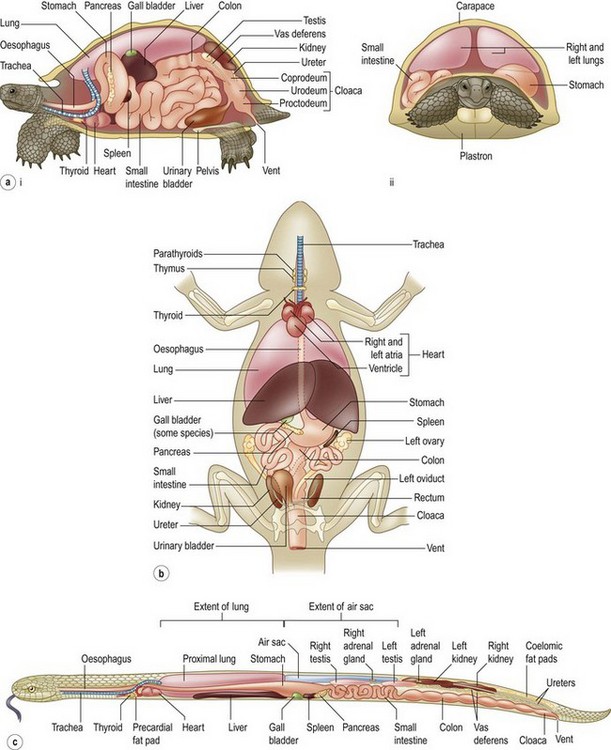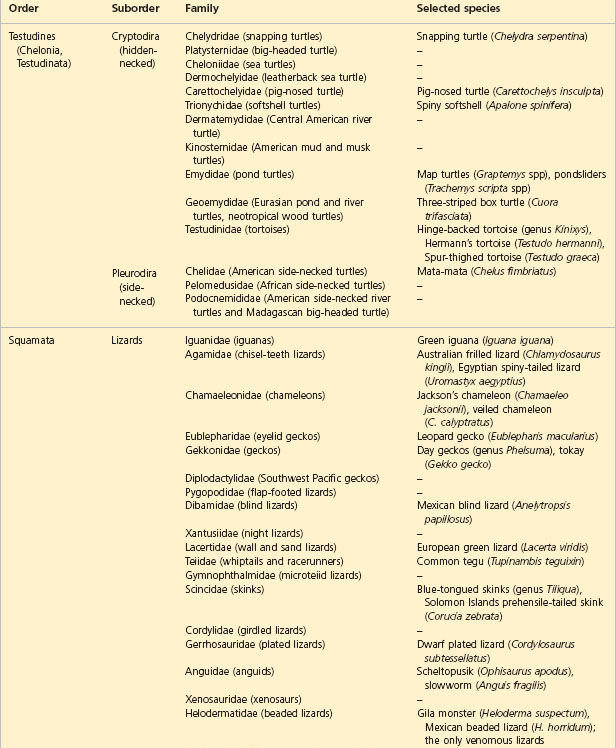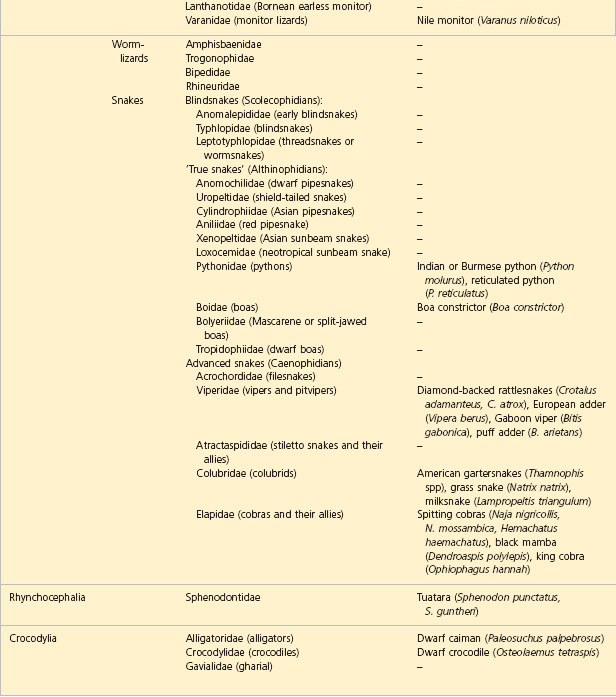15 Reptiles – an introduction
Reptiles are among some of the more unusual pets seen in veterinary practice (Fig. 15.1). An approach similar to that for other pets may be taken with regard to their clinical history and examination, although species-specifics must be known in order to interpret findings pertinent to husbandry conditions. The metabolic rate is in general slower with these ectothermic animals than with mammals, and hence disease processes tend to be more prolonged with reptiles. Investigative techniques and some basic husbandry requirements for selected species will be outlined in this chapter.
Taxonomy
Taxonomic classification of reptiles with some examples of those that may be seen as pets are given in Table 15.1.
Biology
Chelonia
Hibernation
Many species of chelonia (and some other reptiles) will hibernate in the wild for varying periods of time (Box 15.1). In captivity, it is usually advisable to keep this period to a maximum of 12 weeks, otherwise, metabolic reserves will become dangerously low during hibernation and it may be difficult for the tortoise to eat sufficiently during the warmer months in preparation for hibernation. Tortoises should be fasted for 1 month before hibernation to allow the gastrointestinal tract to empty; otherwise continued fermentation may lead to gas build-up and pressure on the lungs, resulting in dyspnoea. During this pre-hibernation time, the tortoise should be bathed to encourage drinking. Water is stored in the urinary bladder for reabsorption during hibernation.






